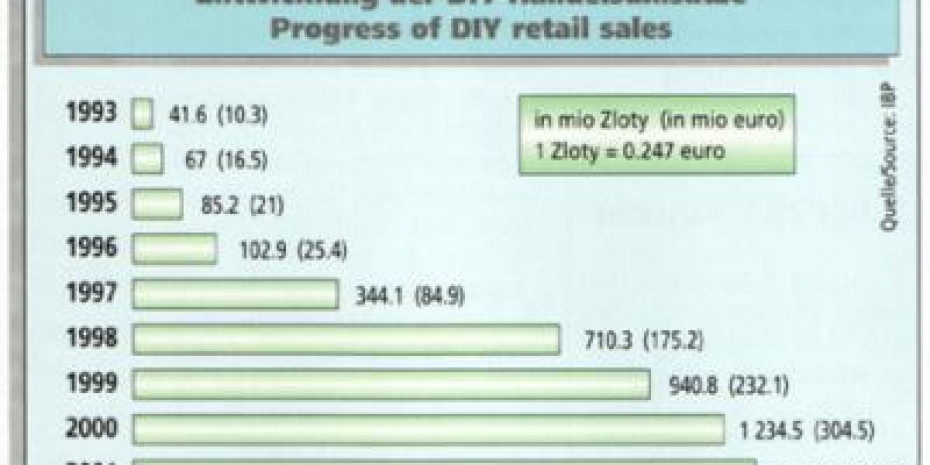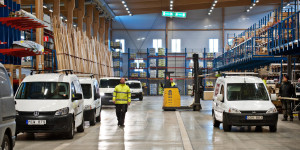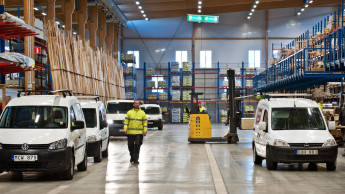A start was made on the development of the DIY industry in Poland in the year 1993 by Nomi (still in Polish hands at the time) and Stinnes (these stores belong to OBI nowadays). Currently over 90 DIY stores in the Polish marketplace have an international stake-holder, the ranks of which include Castorama, OBI, Praktiker, Leroy Merlin, Bricomarché, Hagebua and Nomi.
Dynamic floorspace expansion
Since 1993 there has been a dynamic increase in the speed of floorspace expansion within the Polish DIY retail sector. At that time the entire retail area amounted to approx. 17 000 m2. A doubling of floorspace came within the next two years, and three years later (in 1998) the sales area was 275 000 m2. At the end of the year 2001 the total retail area covered by the DIY stores amounted to more than 530 000 m2. The market leader in terms of area is OBI, followed by Castorama. Although Nomi boasts the greatest number of branches, its outlets are considerably smaller. The Polish market is indebted to the international retail chains for this headlong pace of development.
The DIY trend is fairly widespread in Poland. Poles carry out many simple jobs themselves, with a programme that includes not just changing light bulbs, picture-hanging or gardening, but also minor renovation projects. They call on professionals for laying floors and tiles, installing kitchens and bathrooms, painting jobs and electrical installations, etc. Do-it-yourself as an activity is practised not only when the economy is doing badly.
High sales growth
The DIY superstores in Poland are experiencing a veritable boom, with a steady increase in earnings, especially in the last four years. The highest sales growth (approx. 30 per cent) came in the period between 1998 and 2000. Since the year 2000 the growth rates have been fluctuating around 10 per cent, due to the entry of new competitors on the market. The forecasts for the year 2002 imply further growth of sales in this area, even if the profits have to be shared out among more and more competitors.
The success of the DIY superstores on the Polish market is accompanied by…

 Menü
Menü












 Newsletter
Newsletter